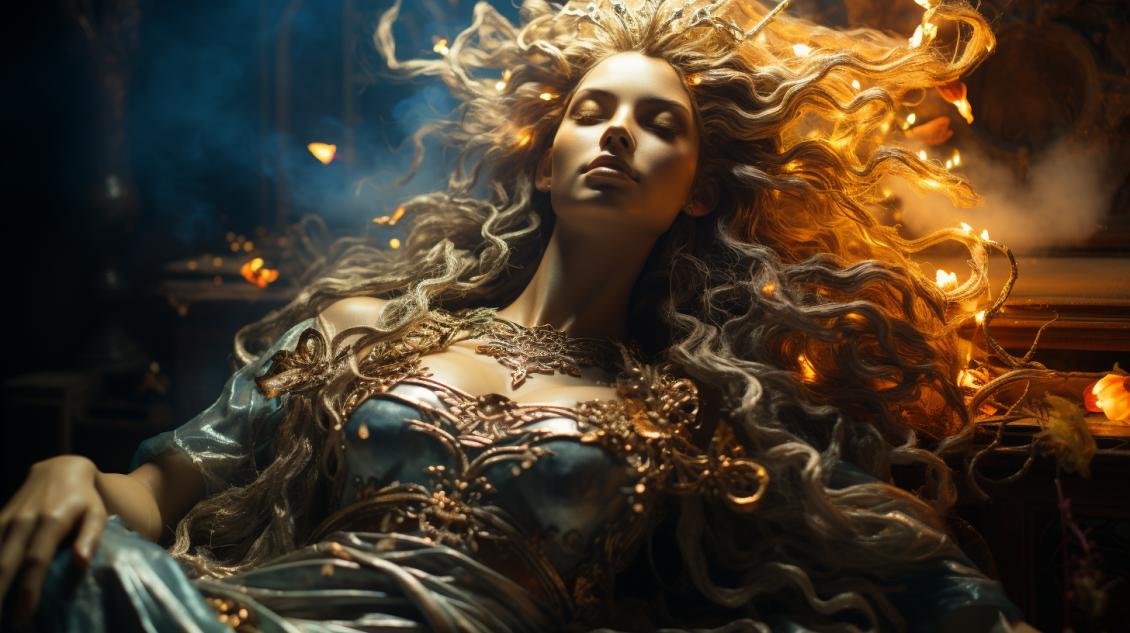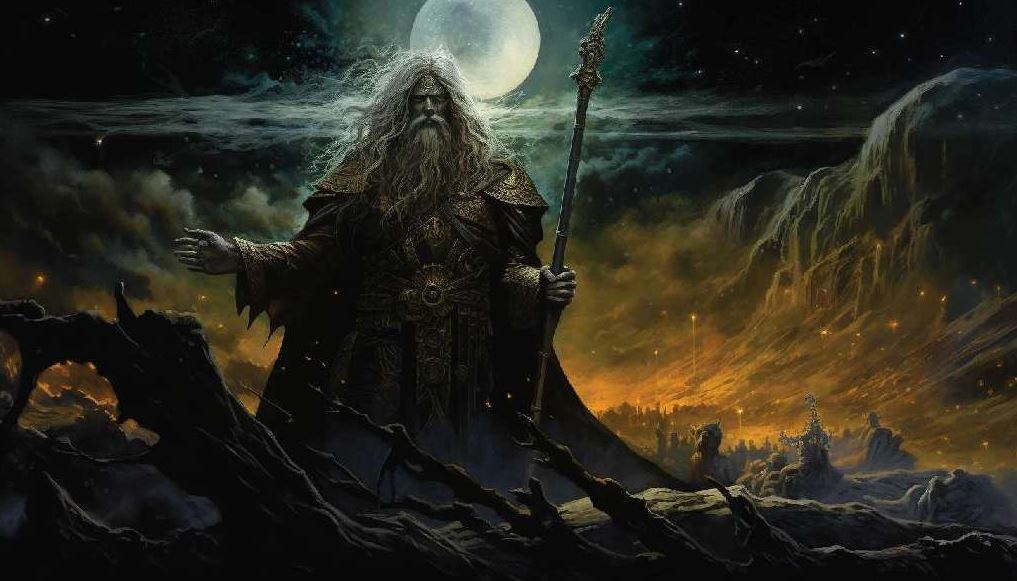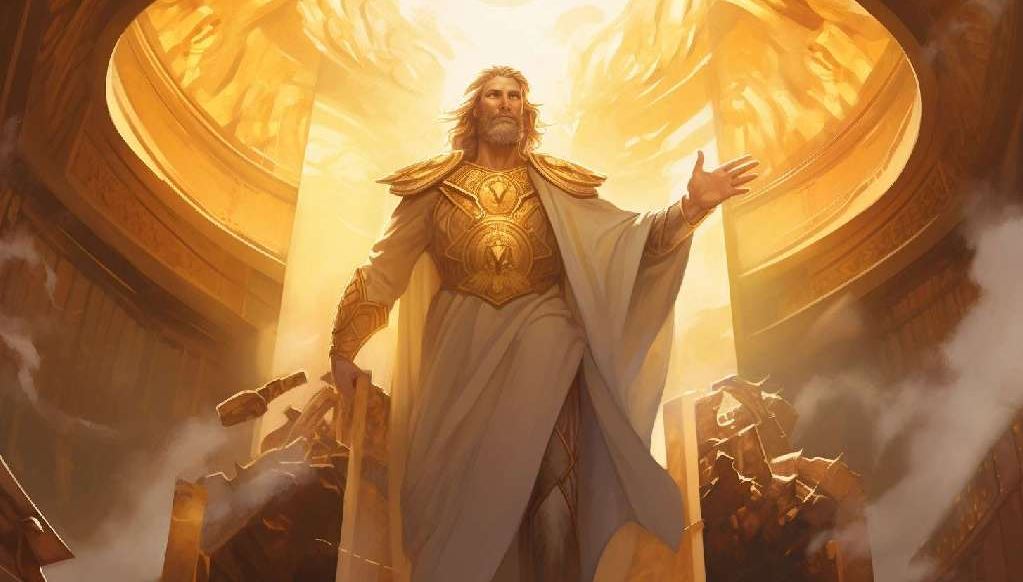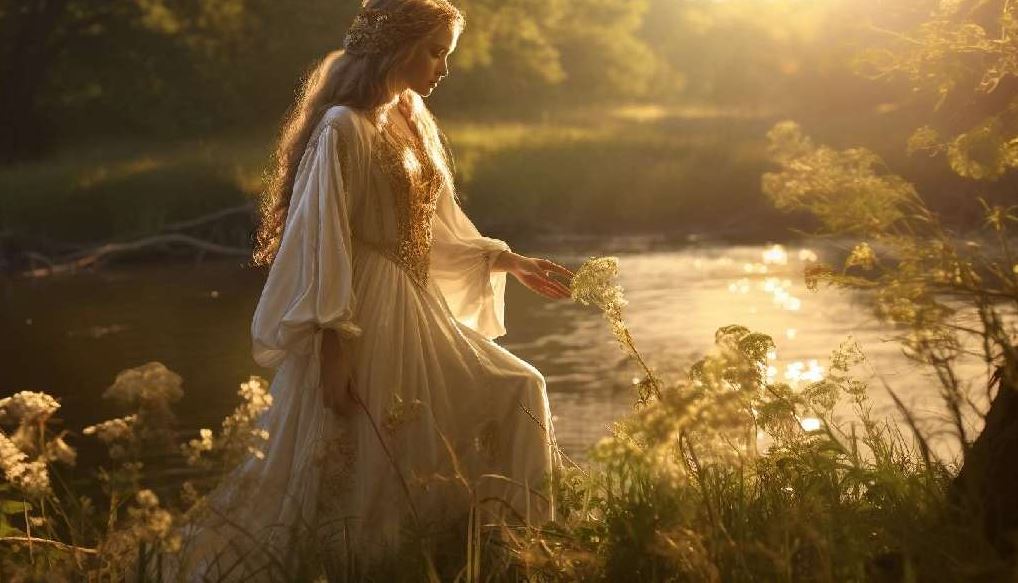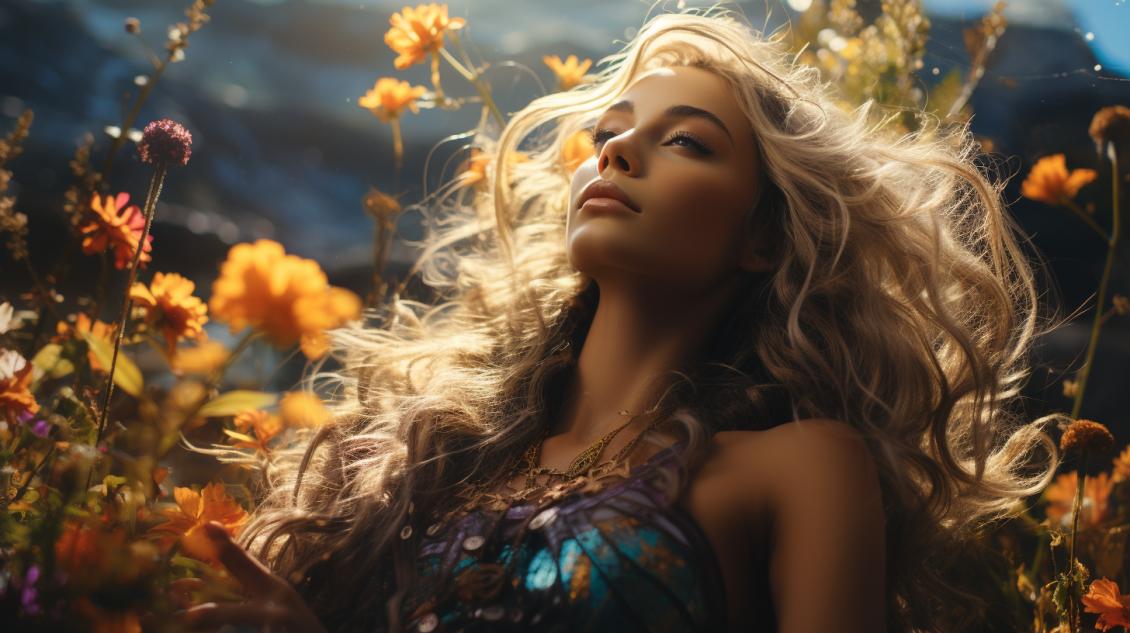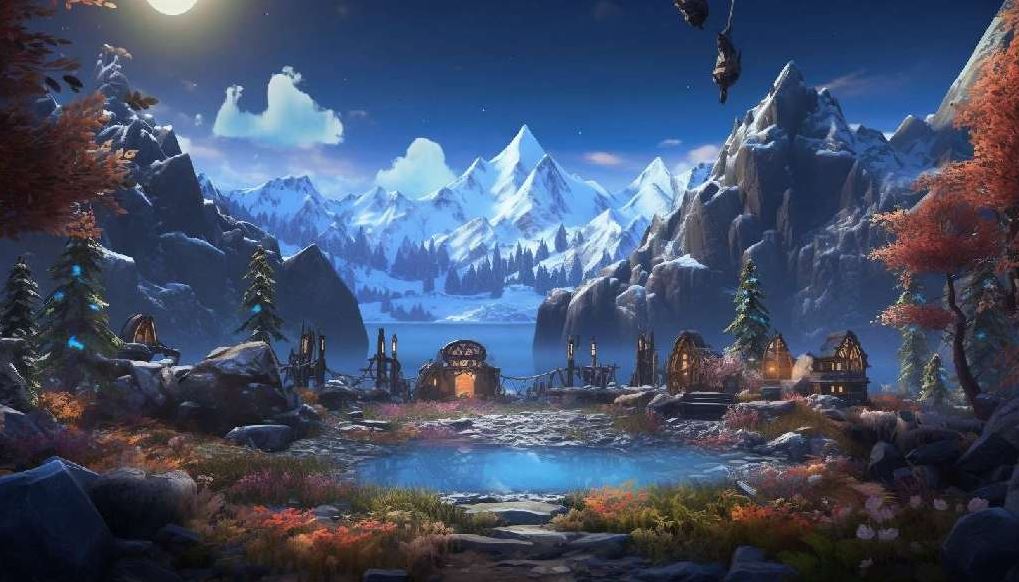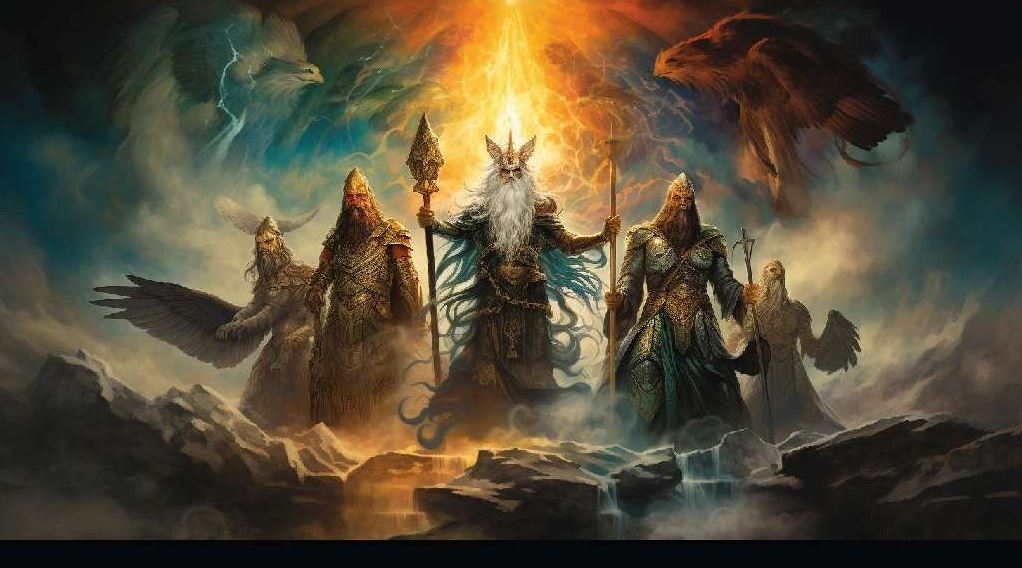Hjuki and Bil: Exploring the Mythology of the Nordic Siblings in American Folklore
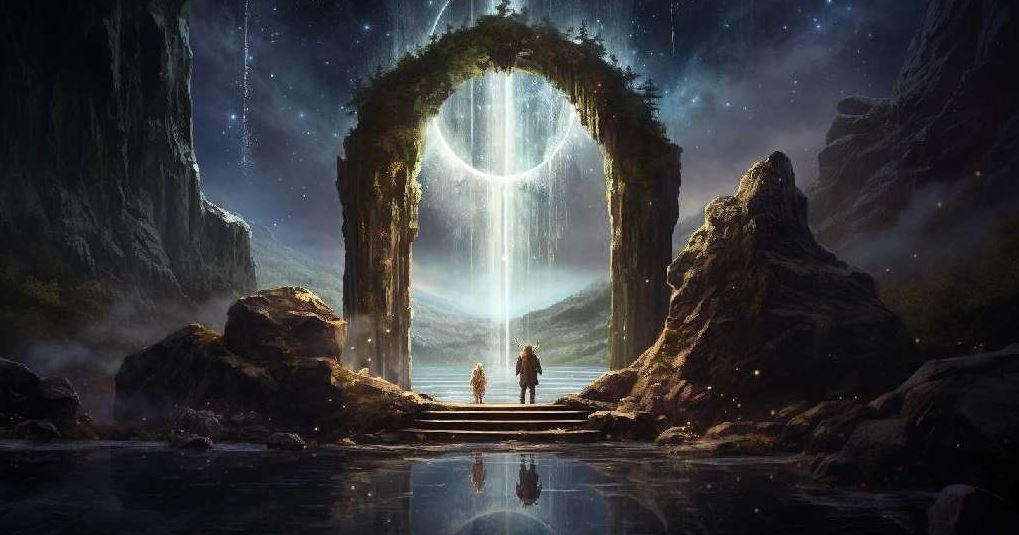
Hjuki and Bil are intriguing figures in Norse mythology. These siblings, mentioned in Old Norse literature, are known for their connection to Máni, the personification of the moon. Their story revolves around a stolen bucket of sacred water, their pursuit to reclaim it, and their transformation into the moon phases.
The significance and origin of Hjuki and Bil have sparked various theories and interpretations, including possible links to Germanic craters and the popular nursery rhyme ‘Jack and Jill.’ This article explores their mythological background, Norse folklore, and cultural impact.
Overview of Hjuki and Bil in Norse Mythology
Hjuki and Bil are intriguing figures deeply rooted in Norse mythology, representing an enigmatic connection to the moon and its celestial journey through the night sky. Their presence is found in various Old Norse sources, including the Edda prosaica written by Snorri Sturluson.
Within Norse mythology, these sibling characters are known for their role in the lunar cycle and their quest to reclaim a stolen bucket of sacred water.
The Mythological Figures of Hjuki and Bil
Hjuki and Bil, commonly depicted as siblings, are inseparable characters in Norse lore. Their exact origin and nature may vary, but they are predominantly recognized as two children closely associated with the personification of the moon, Mani.
According to the ancient tales, Hjuki and Bil hold a significant role in the lunar narrative, adding intrigue and mystery to their mythological presence.
Representation of Hjuki and Bil in Old Norse Literature
Old Norse literature, particularly the Edda prosaica, provides valuable insights into the representation of Hjuki and Bil. Snorri Sturluson’s writings mention these sibling figures in connection to their moon-chasing adventure and their pursuit of the sacred water bucket.
These texts offer a glimpse into the cultural significance and narrative context of Hjuki and Bil in Norse mythology.
Theories about the Meaning and Origin of Hjuki and Bil
Hjuki and Bil in Norse Folklore
Hjuki and Bil hold a prominent place in Norse folklore, embodying the captivating tale of their celestial journey alongside Mani, the personification of the moon. This section explores their fascinating adventures and transformation within Norse mythology.
Hjuki and Bil as Children Following Mani, the Moon
Hjuki and Bil are introduced as young siblings who accompany Mani as he traverses the night sky in his lunar carriage. Captivated by the enchanting dance of the moon, the children are entrusted with the daily task of fetching crystalline water from the sacred well named Byrgir.
As they draw water from the well, they gaze at the reflection of the moon and eagerly search for Hrímfaxi, the horse pulling Mani‘s chariot, as he gallops through the nocturnal realm.
The Quest for the Stolen Bucket of Sacred Water
An unfortunate turn of events unfolds when Máni, driven by his mischievous nature, pilfers the children’s sacred water bucket. Determined to reclaim what was taken, Hjuki and Bil embark on a courageous pursuit in their desperate attempt to retrieve the stolen vessel.
In various versions of the story, their quest might involve the search for a magical well containing a bucket of mead instead of water.
Hjuki and Bil’s Transformation into the Moon Phases
Their tenacity and unwavering perseverance in pursuing Máni’s carriage ultimately earn them a unique reward. Mani, touched by their plight, extends an invitation to the children to join him and dwell in the realms of the moon.
Overjoyed at the prospect of such an extraordinary offer, Hjuki and Bil accept the invitation but feel compelled to inform their callous father, Vikfinn, before leaving. However, Vikfinn, displaying little concern for their departure, dismisses their intentions with indifference.
The following day, Hjuki and Bil ascend to the sky, transforming into the waxing and waning phases of the moon, respectively. Their immortality granted through this metamorphosis ensures their perpetuity in the night sky, forever chasing Mani‘s radiant glow.
Interpretations and Connections
The story of Hjuki and Bil in Norse mythology has captivated scholars and enthusiasts alike, leading to various interpretations and potential connections. This section explores the symbolism of Hjuki and Bil in Norse culture, their possible relation to the Germanic craters theory, and the alleged connection between Hjuki and Bil and the popular nursery rhyme ‘Jack and Jill’.
The Symbolism of Hjuki and Bil in Norse Culture
Hjuki and Bil hold significant symbolism within Norse culture, particularly in their association with the moon and its phases. They represent the ebb and flow of time, mirroring the waxing and waning of the moon.
Their story reflects the cyclical nature of life, where growth and decline coexist harmoniously. Furthermore, their journey to the celestial realm signifies the pursuit of enlightenment and the transcendence of earthly limitations.
Hjuki and Bil’s Possible Relation to the Germanic Craters Theory
Some researchers and mythological experts propose a correlation between Hjuki and Bil and the Germanic craters theory. According to Jacob Grimm, the siblings could represent the visible craters on the moon as observed from Earth.
This interpretation suggests that their portrayal in Norse mythology served as a way to explain the lunar landscape and its distinctive features. The interplay between Hjuki and Bil’s actions and the moon’s appearance adds another layer of depth to their role in Norse folklore.
The Alleged Connection between Hjuki and Bil and the Nursery Rhyme ‘Jack and Jill’
A curious speculation arises regarding a potential connection between Hjuki and Bil and the beloved nursery rhyme ‘Jack and Jill’. Some theorists suggest that the tale of Hjuki and Bil, with their pursuit of a stolen bucket of sacred water, influenced the creation of the popular children’s rhyme.
While evidence supporting this link remains elusive, the thematic similarities in both narratives, involving fetching water and celestial bodies, spark intriguing speculation about the cultural evolution of folklore across different time periods.
As interpretations abound, the enigmatic figures of Hjuki and Bil continue to inspire curiosity and fascination, leaving us to marvel at the profound depths of Norse mythology and its enduring impact on cultural narratives.
Cultural Significance and Legacy
Hjuki and Bil, the enigmatic figures from Norse mythology, have left an indelible mark on various aspects of culture. Their timeless tale has inspired numerous modern interpretations and adaptations, reflecting the enduring fascination with these celestial siblings.
This section explores their cultural significance and the legacy they have imparted.
Hjuki and Bil in Modern Interpretations and Adaptations
In recent years, artists, writers, and filmmakers have found inspiration in the story of Hjuki and Bil, incorporating their characters and narrative into various forms of art and media. From poetry and literature to visual arts and music, these interpretations offer fresh perspectives that captivate contemporary audiences.
Some contemporary authors have reimagined the tale of Hjuki and Bil, exploring their characters in depth and spinning compelling narratives around their cosmic journey. These literary works delve into the emotional aspects of their story, presenting them as complex individuals grappling with themes of loss, longing, and adventure.
Artistic adaptations have also become prevalent, with visual artists capturing the ethereal nature of Hjuki and Bil through paintings, sculptures, and mixed media installations. These creative endeavors invite viewers to immerse themselves in the mystical world of Norse mythology, connecting with the characters on a profound level.
Furthermore, their story has found a place in the realm of music, with musicians drawing inspiration from the tale of Hjuki and Bil to create haunting melodies and evocative compositions. Through music, these artists aim to evoke the ethereal beauty and melancholic spirit of the celestial siblings, crafting sonic experiences that resonate with diverse audiences.
Influences of Hjuki and Bil in Northern European Folklore
Hjuki and Bil’s influence extends beyond reinventions and reinterpretations in modern media. Their mythological presence has seeped into the cultural fabric of Northern European folklore, enriching traditional stories and legends with their celestial charm.
In tales passed down through generations, elements of Hjuki and Bil’s story intertwine with other mythological beings and events, creating a tapestry of folklore that reflects the enduring fascination with celestial bodies and their influence on human lives.
Whether it is through songs, dances, or oral traditions, Hjuki and Bil’s mystical journey continues to captivate and inspire heritage storytellers.
Their celestial adventures have also become a metaphor for the cyclical nature of life, serving as a reminder of the ever-changing phases we experience as individuals and as a society. This symbolism is woven into regional festivals, rituals, and ceremonies, reinforcing the connection between humans, celestial bodies, and the timeless wisdom encapsulated in the myth of Hjuki and Bil.
The Resonance of Hjuki and Bil in Contemporary Popular Culture
As timeless figures from Norse mythology, Hjuki and Bil have made their presence felt in contemporary popular culture, permeating various forms of entertainment and media. From fantasy literature and role-playing games to movies and television series, their characters continue to resonate with audiences around the world.
Many fantasy authors and game designers have drawn from Norse mythology, including the tale of Hjuki and Bil, to shape immersive worlds and captivating narratives. Their characters often find themselves woven into the fabric of epic quests, where they provide a sense of wonder and cosmic intrigue.
Moreover, within the realm of visual media, filmmakers and TV producers have embraced the enchanting allure of Norse mythology, incorporating Hjuki and Bil into their storytelling. Through these adaptations, the celestial siblings become central figures in epic sagas, further immortalizing their legend and captivating audiences globally.
Overall, the cultural significance and legacy of Hjuki and Bil continue to thrive in the present day, with their enduring tale inspiring countless artists, storytellers, and creators. As we delve into their mythological origins and explore their enduring cultural impact, we discover a timeless narrative that transcends time and resonates deeply within the collective human imagination.
..











